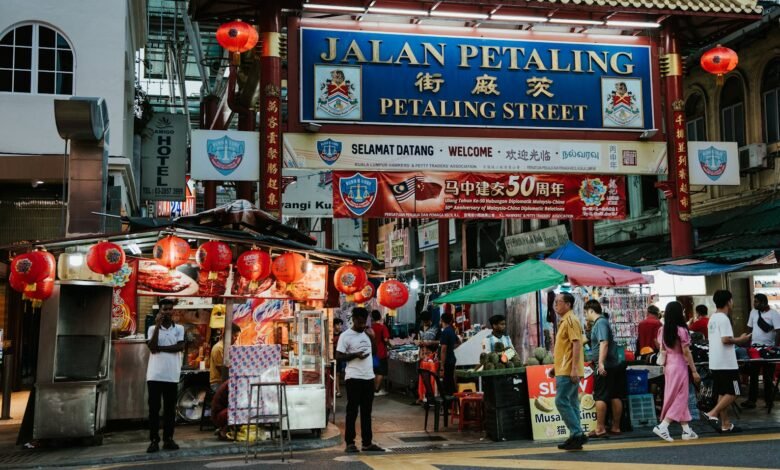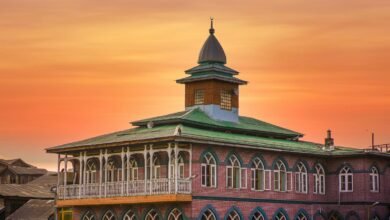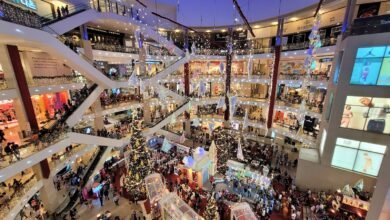
Kuala Lumpur’s Chinatown, located in the heart of the city on Petaling Street, is one of the most vibrant and culturally rich districts. Known for its bustling markets, delicious street food, and historical landmarks, Chinatown is a melting pot of Chinese culture with a Malaysian twist. Whether you’re shopping for bargains, tasting authentic Chinese delicacies, or exploring the area’s rich history, Chinatown offers an immersive and lively experience that attracts both locals and tourists alike.
Petaling Street: The Heart of Chinatown
At the center of Chinatown lies Petaling Street, the district’s main thoroughfare and the heart of its commercial activity. Often referred to as the “Bargain Hunter’s Paradise,” Petaling Street is a lively market where you can find a wide variety of goods, from clothing and accessories to electronics and souvenirs. The street is lined with vendors selling everything from knock-off designer bags to traditional Chinese herbs, and haggling is expected, making it a fun and interactive shopping experience.
The street’s iconic green awnings provide shelter from the sun and rain, while colorful lanterns strung across the road add to the festive atmosphere, especially during Chinese New Year. The market comes alive in the evening, when the lights are on and the aroma of street food fills the air.
A Culinary Adventure in Chinatown
Chinatown in Kuala Lumpur is a food lover’s paradise, offering an incredible variety of Chinese, Malaysian, and fusion dishes. The street food here is legendary, with stalls and small restaurants serving everything from quick snacks to hearty meals. Some must-try dishes include:
- Hokkien Mee: A stir-fried noodle dish made with thick yellow noodles, pork, prawns, squid, and vegetables, all cooked in a rich, dark soy sauce. It’s a local favorite for those seeking bold, savory flavors.
- Char Kway Teow: Another beloved noodle dish, Char Kway Teow is made with flat rice noodles stir-fried with eggs, prawns, bean sprouts, and Chinese sausage. It’s typically cooked over high heat in a wok, giving it a smoky flavor known as wok hei.
- Chinese Herbal Soups: Chinatown is home to several shops specializing in traditional Chinese herbal soups. These soups, often made with ingredients like ginseng, goji berries, and Chinese medicinal herbs, are believed to have various health benefits and are popular for their restorative properties.
- Roast Duck and BBQ Pork (Char Siew): The restaurants and street vendors in Chinatown are famous for their succulent roasted meats. Char siew, or sweet and savory BBQ pork, is a local favorite, often paired with rice or noodles. The roast duck in Chinatown is equally delicious, with its crispy skin and juicy, flavorful meat.
- Lor Bak: A popular street food snack, lor bak consists of marinated pork rolled in beancurd skin, deep-fried to crispy perfection. It’s often served with dipping sauces and is a delicious treat for those looking for a quick bite.
Many of the restaurants and food stalls in Chinatown have been around for decades, passed down through generations, giving visitors a taste of authentic and traditional Chinese cooking.
Historical and Cultural Landmarks
Chinatown is not only a commercial hub but also a district rich in history and culture, home to several important temples and historical sites.
1. Sri Maha Mariamman Temple
Located on the edge of Chinatown, the Sri Maha Mariamman Temple is the oldest Hindu temple in Kuala Lumpur. Established in 1873, the temple is a beautiful example of South Indian architecture, with its gopuram (tower) adorned with intricate statues of Hindu deities. While it is primarily a place of worship, the temple is open to visitors who wish to admire its vibrant colors and detailed carvings.
2. Guan Di Temple
One of the most important Chinese temples in Kuala Lumpur, the Guan Di Temple is dedicated to the Chinese god of war, Guan Yu. This temple is often visited by devotees seeking protection, strength, and courage. The temple’s beautiful red-and-gold façade, along with its ornate interior filled with incense smoke and offerings, makes it a peaceful and spiritual place to visit amidst the busy streets of Chinatown.
3. Sin Sze Si Ya Temple
The Sin Sze Si Ya Temple is another significant Chinese temple located in Chinatown, founded in 1864 by Yap Ah Loy, one of the founding fathers of Kuala Lumpur. The temple is dedicated to two deities—Sin Sze Ya and Si Sze Ya—who are believed to have guided Yap Ah Loy during his rise to power. This temple, with its traditional Chinese architecture and atmosphere of devotion, provides a glimpse into the early history of Kuala Lumpur’s Chinese community.
Central Market: A Hub of Arts and Crafts
Just a short walk from Petaling Street is Central Market, a historic building that has been transformed into a cultural and shopping hub. Built in 1888, Central Market was originally a wet market but has since been repurposed as a center for Malaysian arts, crafts, and souvenirs.
Inside, you’ll find a wide variety of stalls selling traditional handicrafts, batik, jewelry, and artwork. It’s a great place to pick up unique souvenirs, whether it’s hand-painted batik textiles or intricately carved wooden crafts. Central Market also hosts regular cultural performances and events, giving visitors a taste of Malaysia’s diverse artistic heritage.
Chinese New Year in Chinatown
Chinatown truly comes alive during Chinese New Year, one of the most important festivals in the Chinese calendar. The streets are decorated with red lanterns, and the sound of drums and fireworks fills the air as lion dance troupes perform to bring good luck and prosperity for the coming year.
During this time, Chinatown is particularly busy, with people flocking to the area to shop for decorations, food, and gifts. Temples are filled with devotees making offerings, and the entire neighborhood takes on a festive atmosphere. Chinese New Year is the best time to experience the vibrancy of Chinatown’s cultural heritage.
The Modern Side of Chinatown
While Chinatown is known for its historical and cultural significance, it has also embraced modernity, with the rise of hip cafes, boutique hotels, and trendy bars that cater to a younger, cosmopolitan crowd. Many of the old shophouses in the area have been transformed into stylish venues, offering a blend of tradition and contemporary design.
Speakeasy bars and rooftop cafes now dot the area, offering a cool, modern contrast to the traditional market scene below. These new establishments have attracted a wave of local and international visitors, making Chinatown a diverse and dynamic district that continues to evolve while preserving its cultural essence.
Practical Information for Visitors
- Getting There: Chinatown is easily accessible by public transport. The Pasar Seni LRT and MRT stations are just a short walk from Petaling Street. Buses and taxis are also convenient options.
- Best Time to Visit: Chinatown is lively throughout the day, but the evening is when Petaling Street truly comes alive, with bustling night markets and street food stalls. Chinese New Year is the most festive time to visit, but it can also be very crowded.
- What to Wear: Since Chinatown is primarily a market area, comfortable clothing and footwear are recommended, especially if you plan to explore on foot.
Conclusion
Kuala Lumpur’s Chinatown is a vibrant, lively district where history, culture, and commerce intersect. Whether you’re shopping for bargains on Petaling Street, enjoying mouthwatering street food, or visiting historic temples, Chinatown offers a unique and immersive experience. It’s a place where the old meets the new, and where the rich cultural heritage of the Chinese community in Malaysia is celebrated. Whether you’re a first-time visitor or a seasoned traveler, Chinatown is a must-visit destination that promises to leave you with lasting memories of Kuala Lumpur’s dynamic cultural landscape.



